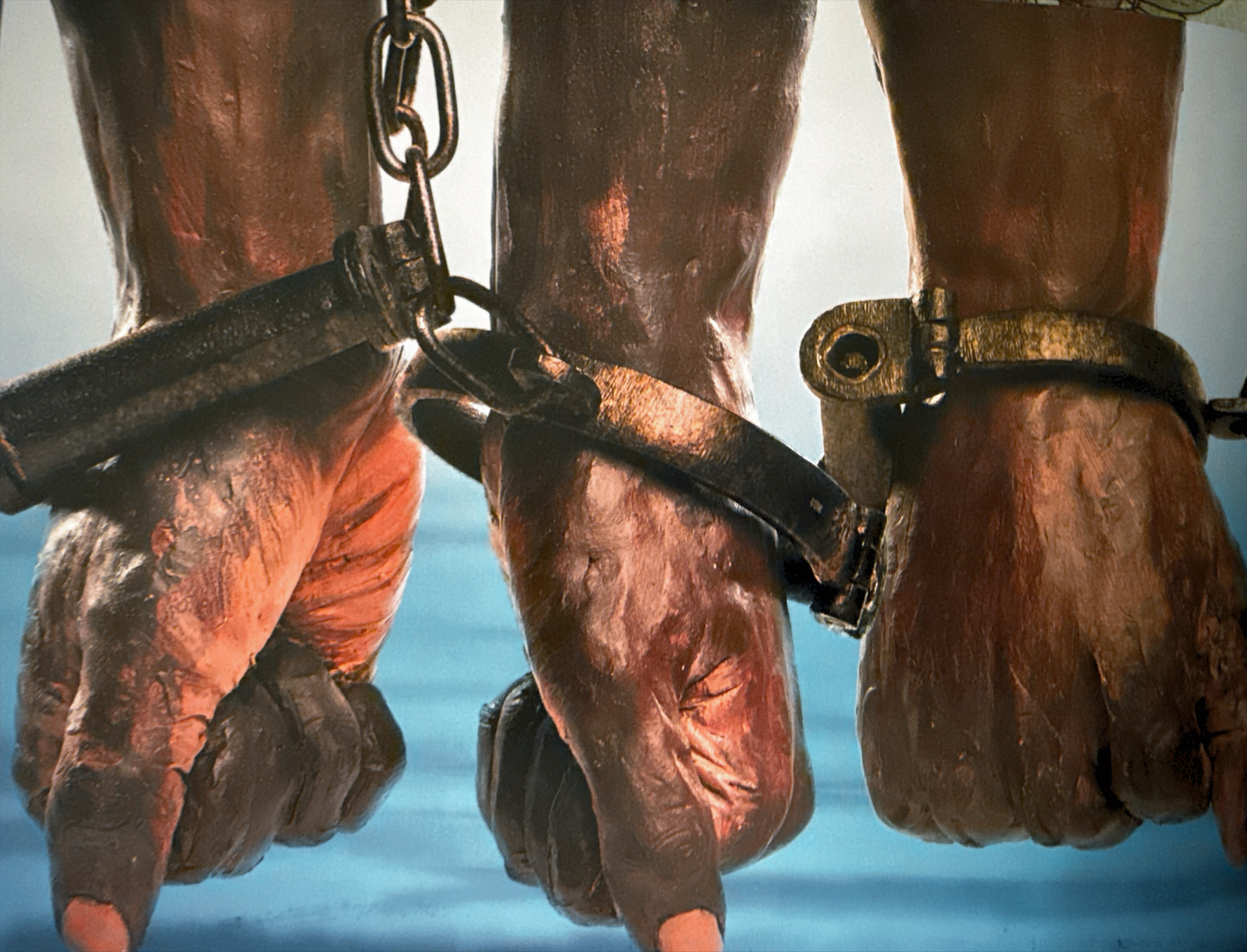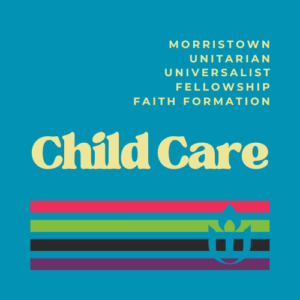This is backgrounder for our service on March 30, Been In The Storm So Long: How DO We Overcome?, a successor to Uncomfortable Liberty, March 5, 2023, which dealt with slavery in NJ and Morristown.
Freedom for enslaved blacks came in 1865, but after a few years of Reconstruction, in 1876 the chains of white supremacy caught them up again.
First of all, the promise of “40 acres and a mule” for freedmen was always illusory. There was no 40 acres available for each of the 4 million of them, even if there had been a way to wrest it from the defeated white plantation owners who suddenly had to work out how to insert margin to cover wages into their devastated businesses. Sharecropping developed as an inherently abusive form, and even during Reconstruction freedmen were cheated and descended into debt. With the departure of what enforcement the Yankees could provide for the Civil War Amendments and the newly enacted Civil Rights laws, Jim Crow sprang to life, with a race-based caste system wielding violence to enforce it.
“Across the South, someone [black] was hanged or burned alive every four days from 1889 to 1929.” Wilkerson, The Warmth of Others Suns, p. 39 (2010). (Shari’s parents were both born in 1929; these are current events for many families.)
During slavery, there had been a practice of leasing one’s slaves to other whites (with payment only to the lessor, never those leased) to work land or to work in factories. With the end of Reconstruction, this re-emerged as convict leasing in the states of Alabama, Florida, Georgia, Louisiana, Mississippi, North Carolina, South Carolina, and Texas. In those days, 75% of all black Americans lived in those states. As told in Blackmon, Slavery by Another Name (2008), between approximately the same years 100,000 to 200,000 blacks, mostly men, were convicted of invented offenses (trying to vote, talking to a white woman, vagrancy or having no job, changing jobs without permission) and sold to companies and individuals. They might be chained together in lightless mines, subject to the lash and other brutality as punishment. They worked for the duration of sentences that could be extended for not paying court costs. Mass graves have been found recently near these former worksites. Blackmon estimates this labor earned tens of millions for the States and for white people who took advantage of the system.
From 1910 through 1970, millions of Southern blacks left the South in the Great Migration. But wherever they went they found segregation, exorbitant rents and blocked opportunities (in a letter Shari’s father wrote when living in Detroit in the 1950’s, he mentions learning a black tenant was being charged much more than he was paying in the same building.)
The GI Bill was intentionally designed to enable Southern states to avoid enabling black veterans to benefit by going to college since most of their institutions simply did not accept blacks (so, again, Shari’s father went to med school at the University of Texas on the GI Bill in the late 40s, but a black veteran his age could not have done so, because the school did not accept blacks till 1956).
The 1960’s finally saw the return of Federal enforcement to the South, to meet a little of the violence. Laws were actually changed – but now the Voting Rights Act has been gutted. And this has empowered voter suppression and gerrymandering; and police in the north and the south are much more likely to jump to violence and to classify a person as a suspect and incarcerate them if they are black. Alexander, The New Jim Crow (2010).
To quote Blackmon, “conventional history” holds “no acknowledgment of the effects of cycle upon cycle of malevolent defeat” … nor of “the impact… of obliterated opportunities on each new generation of an ever-changing population out-numbered in persons and resources.”
What can we do?
International law prescribes ”Reparations,” which is based on the concept of “repair.” It is only when something has been broken that repair is in order.
The United Nations (UN) criteria for reparations include:
- Proportionality
Reparations should be proportional to the harm suffered and the severity of the violations. - Adequacy
Reparations should be sufficient, prompt, and effective. - Forms of reparations
Reparations can include restitution, compensation, rehabilitation, satisfaction, and guarantees of non-repetition. - Recipients
Victims of human rights violations or humanitarian law violations can receive reparations. This includes individuals, families, and communities. - Obligations
States, non-state entities, and individuals have a legal obligation to provide reparations.
Reparations can be material or symbolic, individual or collective, immediate or ongoing. They can also include pecuniary measures, such as compensation, and access to essential services.
The most familiar case of reparations in the United States was the case of reparations paid to Japanese Americans who were imprisoned in concentration camps during World War II and who were forced to sell, or often simply abandon, their homes and other possessions. After the war, in response to years of advocacy by survivors, in 1988, the US passed a law providing for: an apology from President Reagan; Presidential pardons for “offenses” of having violated the terms of the incarceration; and awards $20,000 apiece to all survivors, among other relief. (Shari’s mother-in-law was among those who received a reparations payment; she used the funds to visit her ancestral roots in Japan for the first and only time.)
When Tom spoke as part of our Uncomfortable Liberty service about New Jersey as a Slave State in March 2023, “Reparations” for the Slave period and its legacy in New Jersey was a new topic.
California passed a bill to study reparations in October 2021, in the wake of the police killing of George Floyd. The California Reparations Task Force reported its findings in June 2023. Unfortunately, the California Legislature has not been able to pass any of the recommendations of its Reparations Task Force into law.
In New Jersey, Assemblywoman Shavonda Sumter (D Passaic County) introduced a similar bill in January 2022.
Unhappily Assemblywoman Sumter’s bill never got to committee. Sumter recently announced that she will not seek reelection
As for New Jersey, on Juneteenth 2023, reacting to the stalled bill in the NJ legislature, private nonprofit organizations in NJ established a New Jersey Reparations Council to study the case for reparations here and to report back to the public on Juneteenth, 2025.
Although the NJ Council will not present its final report until June 2025, much of the council’s work has already been made public.
(Note: In the following, Tom the tools Elicit and Notebook LM which have some AI capabilities in developing these topics. All assertions have been fact-checked. Specific sources are noted at the end.)
Here are some details from the New Jersey Reparations Council findings:
- The fundamental harm of chattel slavery itself shaped every aspect of New Jersey. This includes the dehumanization and exploitation of enslaved people, the amassing of wealth by individuals and institutions through their unpaid labor, and the lasting stain of this original sin. New Jersey’s deep and often overlooked involvement in slavery is a central harm being confronted.
- The belief held by too many that slavery never happened in New Jersey and that racial inequality is not a New Jersey issue, obscures the truth and hinders repair. This denial and lack of shared understanding is itself a harm that the council identifies.
- Racial inequality persists in contemporary life for Black people in New Jersey due to the lasting impact of slavery, redoubled by the extension of its harms through the racism that has imbued the culture ever since. These inequalities have been reinforced by generations of policy design rooted in slavery and the lie of white supremacy. While this also can manifest in individual behaviors, the harm is more pervasive.
- Economic injustices include wage, income, and wealth disparities, the lack of intergenerational wealth transfer, and the historical theft of Black land. These economic harms are direct consequences of slavery, segregation, and ongoing discrimination. The council is also concerned with the denial of public goods like safe and affordable housing, clean air and water, and affordable energy to Black communities.
- Loss of democratic rights suffered by Black New Jerseyans, both formal and informal. This includes voter suppression, gerrymandering, restrictions on protests and freedom of expression, as well as the broader failure of New Jersey’s democracy to serve its Black residents.
- Environmental injustices, where Black communities have become “sacrifice zones” bearing the brunt of pollution and environmental hazards due to purposeful and racist policies. This leads to diminished air and water quality, negative health outcomes from toxic facilities, and the burden of the climate crisis. The lack of green space and tree canopy in Black communities is also identified as a harm.
- Racial health disparities persist due to structural racism stemming from slavery. The long-term consequences of slavery continue to shape disparate health outcomes for Black New Jerseyans.
- Harms caused by the public safety and justice systems, are seen as broken by design and used to oppress Black people. This includes over-policing and its destabilizing effects on families and economic opportunity, severe racial disparities in incarceration rates, particularly for youth, and the detrimental impact of mass incarceration. The council is also examining the potential connections between contemporary community supervision programs (parole and probation) and the history of slavery. Experiences of excessive force, unreasonable search, and unlawful seizure rooted in racial discrimination are also significant harms.
- The lasting consequences of segregation in areas like housing and education were deliberate choices leading to wealth inequality and limited economic mobility for Black residents.
(Not surprisingly, many of the findings are similar to those of California, though California did not ever have slavery.)
There is much more, from New Jersey and elsewhere. We hope to organize further study of all these issues.
One theme that runs through the New Jersey and the California reports is the residue of a slave society as a public health issue. Another is the impact of de facto segregation of our public schools.
It is often supposed that reparations involve paying people of African descent for past harm or exploitation, and there is something to that. But the harm continues today. Surely, the solution to addressing injustice cannot be to wait until the generation immediately affected dies. And money may not always be effective, or adequate, or appropriate….
Thank you for trusting us to bring these difficult topics forward. Please come to the service on March 30 (or watch a replay later). And wait for the next one!
Image credit: Alexander, Kwame and Coulter, Dare (art), An American Story. Little, Brown (Boston, New York 2023). Artwork copyright KA Productions 2023.
Sources:
Alexander, Michelle. The New Jim Crow: Mass Incarceration in the Age of Color-Blindness. New Press (2010)
Blackmon, Douglas A. Slavery by Another Name: The Re-Enslavement of Black Americans from the Civil War to World War II. Random House (New York: 2008)
Litwack, Leon F. Been In the Storm So Long: The Aftermath of Slavery. Random House (New York: 1980).
Wilkerson, Isabel. The Warmth of Other Suns; The Epic Story of America’s Great Migration. Random House (New York: 2010).
California Reparations Task Force – Executive Summary – https://oag.ca.gov/system/files/media/exec-summary-ca-reparations.pdf
Hammer Museum forum discussion California Reparations Task Force https://www.youtube.com/watch?v=-miWw5sQKRo&t=579s
New Jersey Reparations Council Health Equity Public Session https://www.youtube.com/watch?v=4XURg3z6maY&list=TLGGWYvJwnl1_4gxMTAzMjAyNQ
As well as other videos under the New Jersey Institute for Social Justice (NJISJ) https://www.youtube.com/@dosocialjustice/featured
New Jersey Reparations Council: History of Slavery in New Jersey
NJRC Public Safety and Justice Public Session
NJRC Democracy Committee Public Session
NJRC Economic Justice Public Session
NJRC Environmental Justice Public Session
NJRC Public Safety and Justice Public Session
NJRC Segregation in New Jersey Public Session
NY Times series: Nice White Parents https://www.youtube.com/results?search_query=NYTimes+nice+white+parents
Nikole Hannah-Jones | Modern Day Segregation https://www.youtube.com/watch?v=6hmhHisBM7Y&t=33s





